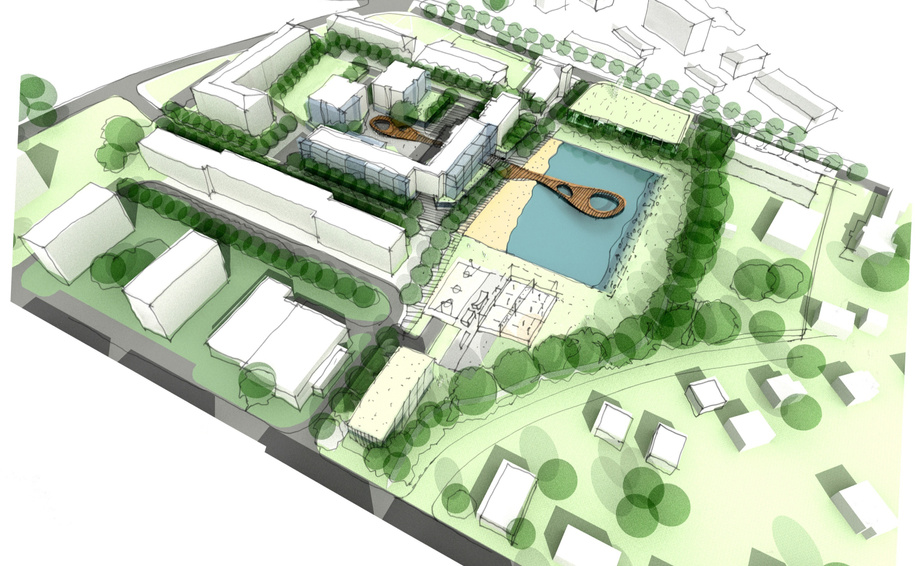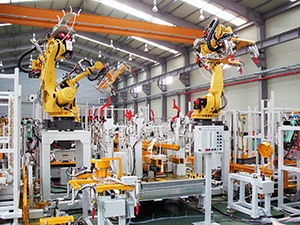NBenefit$ allows to calculate the value of ecosystem services and other socio-economic metrics for nature-based solutions, using a map to select the application area (georeferenced) and calling system dynamics precalculated values to implement those metrics. The software is implemented as a visualization web interface where the end-user (decision-maker, urban planner, etc.) is asked to create spatial and time-dependent scenarios of possible implementation of NBS in cities. He can then run simulations to quantify the potential socio-economic impacts associated with those scenarios (in terms of site-specific biophysical and climatic conditions and land management characteristics), using archetypal NBS (i.e. pre-parameterized models of NBS types, e.g. urban forests, tree corridors, etc.).
This allows NBenefit$ is to inform built environment professionals and decision makers about the cost-effectiveness of different NBS alternatives from early to advance planning and design stages.
More specifically, NBenefit$ employs pre-calculated archetypes and scenarios making use of a system dynamics modelling framework of NBS. A proof-of-concept model for urban forests on a pilot case in Madrid (Spain) is currently operational in NBenefit$. [On a restricted area?][]This model calculates ES supplied by urban NBS in biophysical units, which are later transformed into monetary units that can be used as inputs in costs-benefits analyses. Additional costs and externalities along the life cycle of NBS are also accounted for and incorporated as inputs to the costs-benefits analysis.
NBenefit$ is currently in a stage of development equivalent to Technology Readiness Level (TRL) 5. It means that the components of the modelling framework, and its associated online tool, are fully integrated together and have been successfully tested in simulated environments.
Background:
Nature-based solutions (NBS) are intended as solutions inspired and supported by nature, which address societal challenges and provide social, economic, and environmental benefits in a cost-effective way, increasing the supply of ecosystem services (ES) especially in cities. However, no software tools currently exist to account for the net benefits of specifically designed NBS implementations, informing urban stakeholders (decision-makers, planners, and consultants from the Built Environment sector) about the actual cost-effectiveness of NBS projects.
NBenefit$ is a modelling and assessment tool to estimate the main environmental impacts (positive and negative), externalities and financial costs generated by a specific NBS implementation project over its entire lifecycle. NBenefit$ combines methods from urban ecology, landscape ecology, life cycle thinking and ES assessment, which is not the case of other similar software solutions.
Benefits:
The current prototype of NBenefit$ is one of the rare examples of decision support systems (DSS) on NBS developed to inform built environment professionals with low computer-literacy about the overall long-term cost and benefits of new NBS projects. Ultimately, the software anticipates the cost-effectiveness of NBS projects, which further gives the knowledge basis for more informed implementation of new NBS in urban environments.
NBenefit$ is specifically developed to inform built environment professionals (specifically urban and landscape designers and planners) on costs and benefits of specific (peri)urban interventions containing NBS. Currently, there is a lack of quantitative DSS or modelling tools specific for urban ES and NBS that allow to inform planning and design agency. Compared to existing market solutions, NBenefit$:
- allows to focus on the site spatial level, offering services and functions through a web-based platform easy to use by any professional independently of the technical expertise;
- provides ideally outputs in formats that permit a fast integration of them into the workflows of built environment professionals;
has a GUI (Graphical User Interface) capable, in a straightforward and simplified way, to allow the user drawing a use case of NBS (e.g. bi-dimensional, spatially-explicit design of a forest in a real urban context) and retrieve quantitative figures on country-specific monetary costs and benefits associated with such projects over time, and according to alternative future management scenarios.
Applications:
NBenefit$ is particularly relevant for applications that make use of landscape design documentation of real landscape projects that should be implemented. So far, however, the software has been applied to specific case studies. The purpose of these illustrative applications was to ensure that the development of the modelling framework was fitting to purpose.
One of the most illustrative projects is the evaluation of the Sector of La Mancha, inside Valdebebas Park, a metropolitan green open space in the north of Madrid. For this illustrative case study, six scenarios (alternative proposals) were tested. These scenarios were defined as a result of design decisions on biotic and abiotic attributes, landscape management decisions and waste treatment decisions of the residues generated (end of life decisions). Three scenarios are a good representation of the real project implemented in terms of design and management decisions. Instead, other three scenarios represent more artificialized and high resource consuming project alternatives.
Besides the overall scenarios developed in this exercise, the individual urban forest archetypes composing them were also evaluated to inform on their individual performance over time for different benefits and costs (environmental and monetary).
On top of this application, NBenefit$ is being tested to investigate its potential for the evaluation of green open spaces of urban masterplan proposals. This exercise makes use of the results from the competition for the future Quartier Alzette in Esch-sur-Alzette, Luxembourg. Since masterplans usually do not provide a detailed definition of trees, it was decided that suitable archetypes should look like land cover classes (i.e. deciduous or coniferous trees). In addition, masterplans might alter natural habitats and species movements (on the right, relevant surrogate species present around Quartier Alzette). Then, it was important to study how NBenefit$ could contribute to habitat and ecological connectivity assessments. Since NBenefit$ also models changes in biophysical attributes (e.g. tree crown diameter, as for the graph on the right) over time, these changes can be used as proxies to map modifications in the conditions of ecosystems, which serve as inputs for habitat and connectivity assessments.
IP Status:NBenefit$ has been registered as Trademark into the European Union of Intellectual Property Office (EUIPO) with the filing nr. 018146649 (date of EUTM registration and publication: 05/03/2020), and its logo (here on the right) is also protected.
Future Developments:
The goal of LIST developers is to advance NBenefit$ up to TRL 7/8. These are the levels where a new technology should be successfully tested in real operational environments, which represents an equivalent set of conditions − in terms of project complexity and time limitations – to those that e.g. landscape practitioners have to face when developing a project. Therefore, still further technical and scientific advances are needed to make NBenefit$ ready to achieve such a sophisticated level of development and to support landscape practitioners and professionals from the Built Environment. Working with professionals in test-bed environments (where their expert-feedback, knowledge and data can be transferred to the software) may allow customizing an operational version of NBenefit$ that can then be used to manage local/site specific needs and urban design and planning practice.
Desired business relationship
Technology development
Licensing


